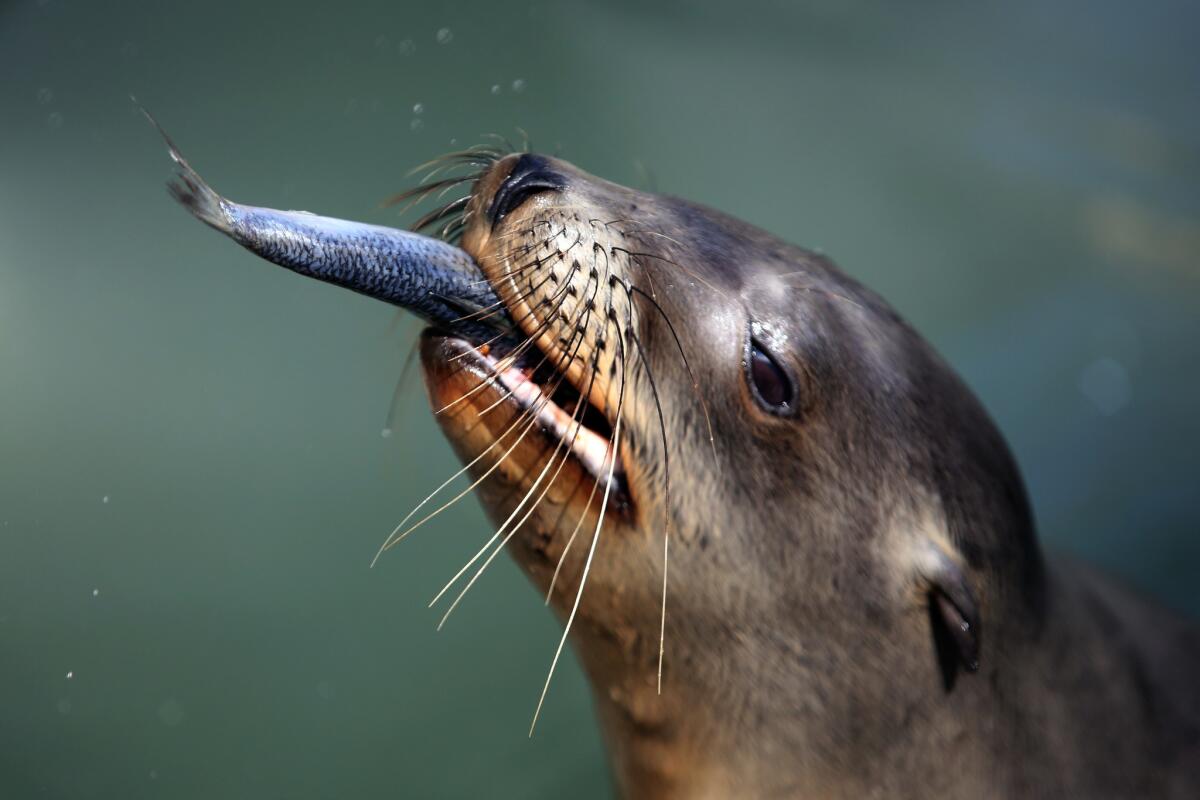California sea lion crisis: Warmer seas may be to blame

- Share via
Nearly 1,000 abandoned California sea lions have washed ashore this year in what rehabilitation centers say is a growing crisis for the animals.
Emaciated and dehydrated sea lions, mostly pups about 8 months old, have been admitted in record numbers to facilities up and down the California coast.
As of now, there are 550 sea lions at facilities statewide, according to NOAA Fisheries, which addressed the crisis Wednesday morning during a conference call with media.
It’s the third straight year for record numbers of sea lion strandings in the state.
Earlier this month, researchers from the National Oceanic and Atmospheric Administration’s National Marine Mammal Laboratory visited sea lion rookeries on the Channel Islands, where most of America’s sea lions breed.
They measured and weighed pups and found them to be considerably underweight. Their average growth rate also was alarmingly low.
“It’s the lowest growth rate we’ve ever observed,” said Sharon Melin, NOAA Wildlife biologist with the National Marine Mammal Laboratory.
The pups’ weight was similar to what was seen in 2013, the year of an “unusual mortality event” for sea lions, and during the 1998 El Niño, which was another difficult year for the mammal.
A UME is characterized by an unexpected number of strandings and significant die-off of a marine mammal population.
Although scientists are still awaiting data from research done on the islands, NOAA Fisheries says warmer-than-average sea surface temperatures along the California coast in fall 2014 may be a factor.
The warmer water could have affected the sea lions’ prey resources. Female sea lions may be having to expend more effort and time to get food, so pups are abandoned.
According to multiple California marine mammal centers, they are seeing a much larger number of sea lions in the first two months of 2015 than in 2013.
“The sea lion pups arriving at the Marine Mammal Center may look like barely more than skin and bones, but these are the lucky ones” because they receive treatment, said Shawn Johnson, director of veterinary science at the Marine Mammal Center in Sausalito, Calif.
Follow @AmyTheHub and @JosephSerna.
More to Read
Sign up for Essential California
The most important California stories and recommendations in your inbox every morning.
You may occasionally receive promotional content from the Los Angeles Times.















